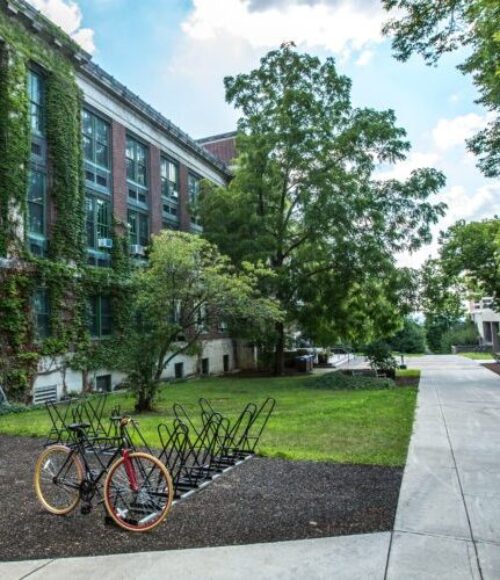Alternative Pathways in Higher Ed: Setting the Stage

Alternative Pathways in Higher Ed: Setting the Stage
The traditional higher education pathway used to look something like a long cross-country trip on a series of highways. People had a clear idea of the destination they hoped to reach and took the straightest possible path to get there, progressing steadily from one point to the next: an undergraduate degree to a master’s degree, sometimes to a terminal degree before beginning a lifelong career.
Nowadays, that pathway looks much different. People get off at the exits. They might stop for a while in a particular city—the equivalent of dabbling in a short-term job—then get back on the road to a different job or another educational opportunity. Maybe they take back roads and skip the highway altogether. Perhaps they aren’t even aiming for a destination on the other coast.
The point is there are many alternative pathways in higher ed, and they are worthy of embracing. I’m excited to explore those pathways in a multi-part blog series. In this first part, I’ll start at the beginning: How did we get here? What does the current landscape look like? And why is it so critical for higher ed institutions to understand and adapt to that landscape?
Examining Changing Attitudes about Work
The role work plays in society has always influenced higher education. But the relationship between work and education, and people’s attitudes about work itself, have changed significantly in recent years.
Until the 1980s, it was common for a person to remain in the same 1-2 jobs for the entirety of their career. There was an unspoken agreement between the employer and the employee: the employer treated the employee well enough, and the employee reciprocated with loyalty to the business.
That bond began to weaken in the 1990s, and today, it’s weaker than ever. The divide between employer and employee has become stark indeed. Employers often prioritize downsizing and profitability at the expense of workers. Individuals often prioritize money, purpose, meaning, and fulfillment at the expense of loyalty to any one company.
A resume listing four jobs in 10 years was once a red flag to hiring managers. Today, moving to a new job every few years is the norm. According to the US Bureau of Labor Statistics, the median tenure of workers ages 55 to 64 years (9.8 years) is more than three times that of workers ages 25 to 34 years (2.8 years).
Providing Faster Pathways to Proficiency
Due to this significant shift in employee retention, employers have become more cautious about investing in training and development. Why implement robust programs, like those popular in the 1980s, if you don’t expect to retain employees for more than a couple of years? Instead, many companies have adapted their training initiatives to focus on smaller content segments that are more immediately applicable to upskilling or on-the-job training.
Employers and employees alike want faster pathways to proficiency. Employees want to upskill quickly to take on new opportunities that fit their lives. They no longer plan to work 50 hours per week at the same company for 40 years. Employers want more efficient and economical options for training employees—and better criteria for assessing candidates when they need to quickly fill a position.
In the current landscape, a bachelor’s or master’s degree can no longer be the gold-standard indicator of an individual’s ability to perform well in a given role. This is where alternative pathways in higher ed like microcredentials, prior learning assessments (PLAs), and badges are becoming more appealing for their efficiency and cost-effectiveness.
The Challenge for Higher Education: Meeting People Where They Are
Changing attitudes about work and continuous learning inevitably inform higher education trends, particularly as those trends apply to serving the adult learner population.
We all acknowledge that higher education’s role isn’t to have one touchpoint with an individual and send them off into their career. The concept of lifelong learning has been part of the bigger picture for a long time. It’s not uncommon for people to leave the workplace temporarily to pursue additional educational opportunities.
The problem is that the current architecture of degrees doesn’t map to that well-established reality. The standard academic model still positions a PhD as the pinnacle of achievement, despite the fact that relatively few people need a terminal degree to be proficient and successful. Even master’s degrees are less prominent than they once were.
If this standard academic model is the long cross-country trip on a series of highways, alternative pathways like microcredentials, PLAs, and badges are the back roads. Higher education must be willing to meet people where they are instead of remaining in their fixed positions on linear highways. Those highways aren’t as busy as they once were.
The important question colleges, universities, and corporate training decision-makers need to answer is: How can we weave learning into the workflow of people’s lives?
The next article in this series about alternative pathways in higher ed will explore some of the options that lower the barriers to continuing education. I hope you’ll come back and read it. Be sure to follow MindMax on LinkedIn for our latest blog posts and news about higher education trends.

